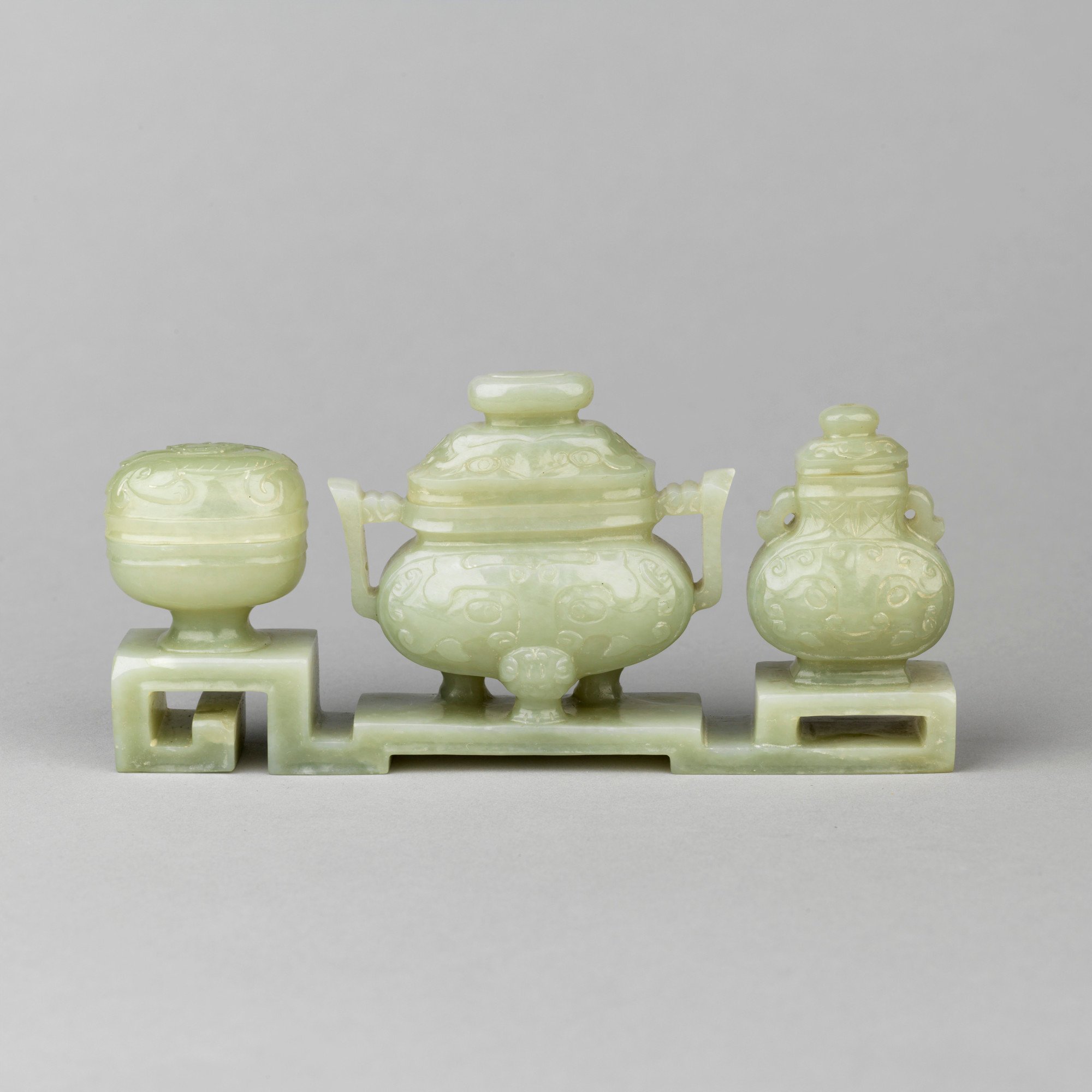
Vibrant jades collected from around the world
Maori pounamu
Nephrite jade from the South Island of New Zealand is referred to by Maori as pounamu, literally translated as greenstone. As in Chinese culture, nephrite for Maori people is imbued with many symbolic qualities. For example, as nephrite is associated with imperial courts in China, pounamu is used to designate high status amongst Maori. Pounamu was traditionally used by Maori for weapons and tools as well as for adornment. Mere (flattened club-shaped weapons) made of pounamu were highly revered weapons exclusively used by chiefs. Such objects were passed down through the generations and often became imbued with a spiritual quality, inheriting the mana (spiritual authority) of their successive owners.
Many of the pounamu objects in the Royal Collection were received as gifts. The Maori custom of tuku, ceremonial gift exchange, was used by some Maori chiefs to demonstrate allegiance in the years preceding the formal annexation of New Zealand in 1840. Subsequently, the gifting of a mere pounamu, particularly one that had been used in battle, was used to demonstrate reconciliation to the British despite previous violent resistance to their arrival in New Zealand.




